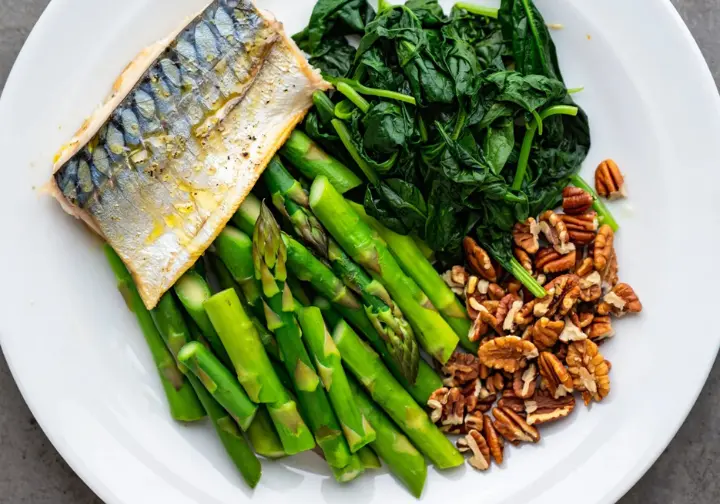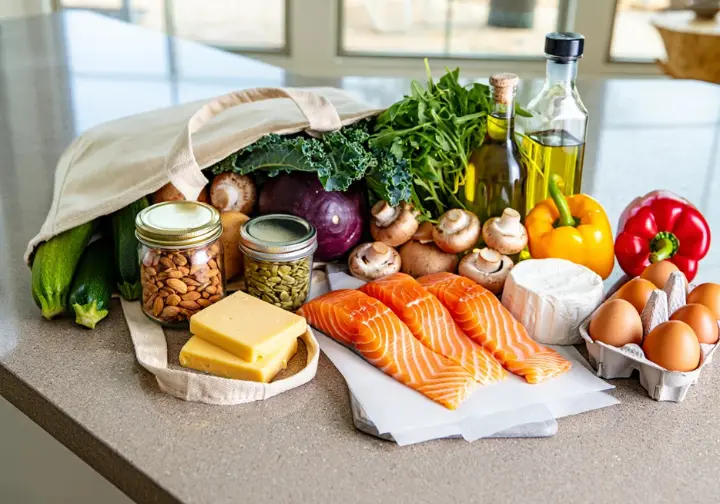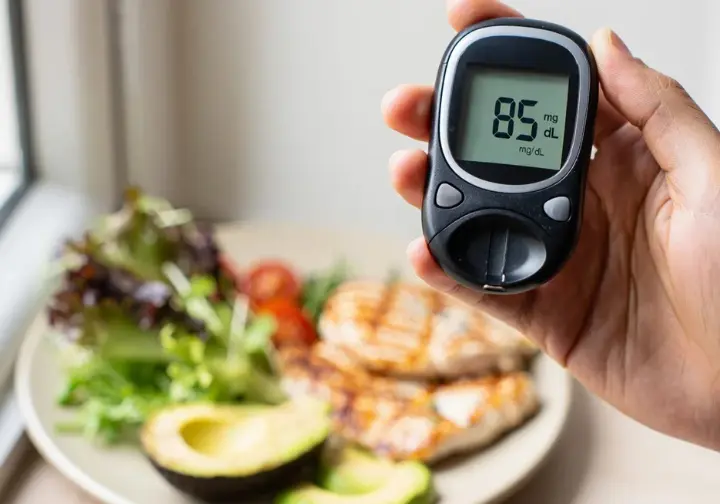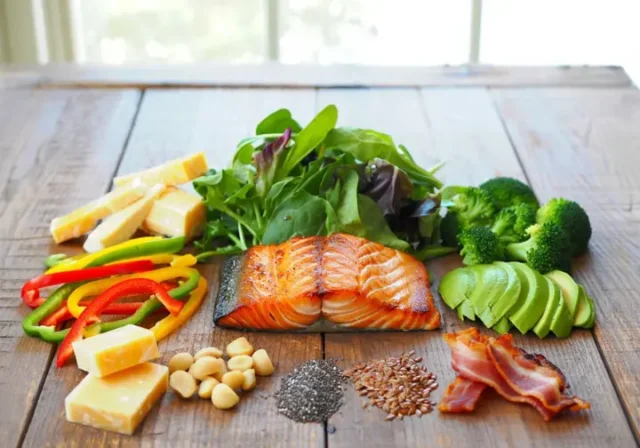In this article
Navigating the world of diets can feel like charting unknown territory. Terms like “no carb high fat diet” echo through online forums and health discussions, but what do they truly mean? We’ll explore the landscape of very low-carbohydrate diets, clarifying the distinctions between popular approaches like Keto, LCHF, and the Carnivore diet, examining their potential benefits, risks, and practical considerations.
This exploration aims to provide a clearer map, helping you understand if this path aligns with your health goals. Let’s delve into the details, moving beyond the headlines to understand the terrain of low carb dieting.
Defining “No Carb” Diets

The term “no carb” often creates confusion, suggesting a complete absence of carbohydrates. In reality, this usually refers to very low-carbohydrate diets that drastically limit, but don’t entirely eliminate, carbs. Understanding the nuances between approaches like the Ketogenic, LCHF, and Carnivore diets is the first step in navigating this dietary landscape effectively.
What “No Carb” Means
Often, when people search for a no-carb diet, they’re looking for ways to drastically cut carbs. However, achieving absolutely zero carbohydrate intake is nearly impossible and nutritionally debatable, as trace amounts exist even in animal products. The term usually signifies a Very Low-Carbohydrate (VLC) approach, significantly restricting carbs.
Scientifically, VLC diets are often defined as consuming less than 10% of daily calories from carbohydrates, typically translating to 20-50 grams per day. This is a stark contrast to standard low-carb diets (up to 130g/day) or typical dietary guidelines. Recognizing this quantitative difference helps set realistic expectations for the dietary changes involved.
Many following VLC diets track “net carbs,” calculated by subtracting fiber and half of sugar alcohol grams from total carbohydrates. The rationale is that fiber and sugar alcohols have minimal impact on blood sugar levels compared to digestible carbs. This calculation method is common in Keto and LCHF communities.
Search intent often reveals confusion around “no carb,” with users potentially expecting absolute carbohydrate elimination. Addressing this misconception early helps manage expectations about the actual food restrictions and requirements involved in VLC approaches like Keto or LCHF. It highlights the need for precise language when discussing a low carbohydrate diet.
It’s vital to see “no carb high fat” not as one single diet but a category encompassing approaches with varying degrees of carbohydrate restriction. These range from the strict very low-carbohydrate ketogenic diet to the broader LCHF category and the extreme Carnivore diet. Each has unique rules and physiological goals.
Ketogenic Diet Explained
The Ketogenic (Keto) diet is a specific VLC plan defined by a strict macronutrient ratio: very low carbohydrate (5-10% calories, <20-50g/day), high fat (55-75%+ calories), and moderate protein (15-35% calories). This precise eating plan aims to fundamentally shift the body’s fuel source.
The core goal is inducing and maintaining nutritional ketosis. By severely restricting carbs, the body depletes glycogen stores and forces the liver to produce ketone bodies from fat breakdown. These ketones then fuel the brain and body instead of glucose, marking a significant metabolic state shift.
Keto emphasizes moderate, not excessive, protein intake. This is because the body can convert surplus protein into glucose through a process called gluconeogenesis, potentially hindering the establishment or maintenance of ketosis. Careful protein management is a distinct feature compared to some other low-carb, high-fat diets.
Initially developed in the 1920s, the ketogenic diet served primarily as a therapeutic tool for managing epilepsy in children, where it remains effective. Its popularization for fat loss and other health goals is more recent.
Several variations of the ketogenic diet exist beyond the Standard Ketogenic Diet (SKD). These include the Cyclical Keto Diet (CKD), Targeted Keto Diet (TKD), and high-protein diets within a keto framework, offering flexibility for different lifestyles and needs, sometimes using MCT oil to boost ketone production.
LCHF Diet Spectrum
Low-Carb High-Fat (LCHF) represents a broader category than the strictly defined Keto diet. It covers a wider range of carbohydrate intake levels while still emphasizing fats and reducing carbs, acting more like a spectrum than a single protocol. Many different low carb diets can fall under the LCHF umbrella.
Unlike Keto’s rigid <50g carb limit, LCHF diets often align with standard low-carb definitions, typically allowing less than 130 grams daily or under 20-26% of total calories. Some interpretations are even more flexible, potentially making adherence easier than strict Keto for some individuals.
While ketosis might occur on an LCHF diet depending on the exact carb intake, inducing deep, sustained ketosis is not necessarily the primary objective, unlike with the standard ketogenic diet. The focus is more generally on reducing carbohydrate dependency and increasing fat utilization.
LCHF shares traits with other named diets, like later phases of the Atkins diet or the historical Banting diet. These terms are sometimes used interchangeably, reflecting the broader nature of reduced carb intake and increased fat intake.
The potentially higher carbohydrate allowance in LCHF compared to Keto offers greater flexibility. This might permit a wider variety of low-carb vegetables or small fruit portions, potentially improving long-term diet compliance for some compared to stricter very-low-carb diets. Consider exploring a detailed low carb meal plan and menu for ideas.
Carnivore Diet Basics
The Carnivore diet represents the most extreme form of dietary carbohydrate restriction, aiming for zero or near-zero carbs. It achieves this by completely eliminating all plant-based foods, distinguishing it fundamentally from Keto and LCHF, which include low in carbohydrates plant options.
This diet involves consuming only animal-derived foods: meat (beef, pork, lamb), fish, seafood, eggs, and animal fats (lard, tallow, butter). Organ meats and bone broth are often included. All fruits, vegetables, grains, legumes, nuts, and seeds are strictly forbidden.
Proponents often cite a controversial belief that early human ancestors thrived primarily on meat and fish, linking modern diseases to plant-inclusive, high-carbohydrate diets. This evolutionary argument is a key part of its promotion, suggesting it’s the ideal diet.
Unlike the ketogenic diet (KD) is a low-carbohydrate/high-fat diet with established therapeutic uses, the Carnivore diet lacks robust scientific backing for its claimed benefits (weight loss, mood improvement). Evidence is mostly anecdotal, representing a low level of proof for this dietary approach.
Excluding all plant foods raises serious concerns about potential nutrient deficiencies, especially fiber, Vitamin C, and phytonutrients. While organ meats can provide some micronutrients, the long-term nutritional adequacy and health impacts of this diet treatment remain largely unstudied and questionable.
Foods: Eat vs. Avoid

Understanding what constitutes the core of these diets is crucial. Keto and LCHF allow a specific range of whole foods while strictly limiting others. The Carnivore diet has an extremely narrow list. Importantly, within any low-carb, high-fat diet, the quality of the chosen foods plays a significant role in the overall health impact.
Keto/LCHF Allowed Foods
These diets center on whole, unprocessed foods rich in fat and protein. Staples include meats (beef, pork, lamb, poultry), fish (especially fatty fish like salmon), seafood, and whole eggs. Fattier cuts are often preferred in stricter Keto plans to boost fat intake.
A major focus is incorporating healthy fats. This includes monounsaturated fats from olive oil and avocados, omega-3s from fish, and certain saturated fats from coconut oil, butter, and tallow. Selecting quality sources of dietary fats is emphasized.
Non-starchy vegetables are vital for nutrients and fiber while keeping carbs low. Think leafy greens (spinach, kale), broccoli, cauliflower, bell peppers, mushrooms, asparagus, and zucchini. Their inclusion clearly separates Keto/LCHF from the Carnivore diet.
High-fat dairy like hard cheeses, heavy cream, and butter fit in moderation. Nuts (almonds, walnuts) and seeds (chia, flax) are common for their fat content, but portion control is key due to their carbohydrate content. Full-fat plain yogurt can sometimes fit.
Most fruits are out due to sugar, but small portions of low-sugar berries (strawberries, blueberries) and high-fat fruits like avocados and olives are usually okay. Water, plain coffee/tea, and bone broth are primary beverages.
Keto/LCHF Restricted Foods
All forms of added sugar (table sugar, corn syrup, honey) and foods containing them (soda, candy, pastries, sweetened yogurts) are strictly eliminated. This is fundamental to achieving a very-low-carbohydrate diet. Diet drinks sweetened artificially may be debated.
All grains (wheat, rice, corn, oats) and products made from them (bread, pasta, cereal) are excluded. These are major carbohydrate sources in a standard diet and are avoided in low carbohydrate diets.
Starchy vegetables like potatoes, sweet potatoes, corn, and peas are avoided. Most fruits are also out due to natural sugars (fructose), except for small amounts of berries. This restriction is key to limiting carbohydrate consumption.
Beans, lentils, chickpeas, and peanuts (legumes) are generally restricted or excluded due to their carbs. Some less strict LCHF diets might allow tiny amounts, but they are typically avoided in a standard very-low-carbohydrate plan.
Many processed foods, especially “low-fat” items, often contain hidden sugars or refined carbs and are discouraged. The focus remains on whole, unprocessed ingredients, avoiding low-fat foods that compensate with sugar.
Carnivore Diet Food List
Meat is the absolute mainstay: beef, pork, lamb, poultry, game. Fatty cuts are preferred for energy. Organ meats like liver are encouraged for nutrient density, forming the core of this no carb high fat diet.
All types of fish, seafood, and eggs are permitted, providing protein, fats (omega-3s), and micronutrients. They are staple components of the diet items allowed on this restrictive eating plan.
Animal-derived fats like butter, lard, and tallow are primary energy sources, used liberally. These align with the diet’s zero-plant-oil principle, contributing significantly to the high-fat intake.
Some variations might allow low-lactose dairy (hard cheese, heavy cream), but strict versions exclude it. Salt and pepper are generally okay; other zero-carb seasonings might be used. Food choices are extremely limited.
The defining rule is eliminating all plant foods: no fruits, vegetables, grains, legumes, nuts, seeds, plant oils, or sugars. Beverages are typically water and sometimes bone broth. This makes it a true carb-free food approach.
Importance of Food Quality
Simply hitting macro targets isn’t enough for a healthy diet. The quality of foods chosen within low-carb, high-fat diets significantly impacts health, especially cardiovascular markers. Focusing only on ratios overlooks this vital aspect of nutritional habits.
Prioritizing healthier unsaturated fats (from olive oil, avocado, fatty fish) over excessive saturated fats (especially processed sources) aligns with heart-healthy principles, even within a higher-fat diet. Choosing healthful fats is key.
A well-formulated Keto or LCHF dietary plan emphasizes whole, unprocessed foods like fresh meats, fish, eggs, low-carb vegetables, nuts, and seeds. Minimizing processed meats and packaged “keto” products leads to a healthier pattern than relying on high-fat recipes made with poor ingredients.
The type of fat consumed greatly influences LDL (“bad”) cholesterol. Fat-rich diets high in saturated fats from less healthy sources are more likely to raise LDL compared to those emphasizing unsaturated fats. This highlights why fat quality matters in fat diets.
Choosing nutrient-dense options helps mitigate deficiency risks inherent in various diets. Including leafy greens, fatty fish, and nuts/seeds in Keto/LCHF, or organ meats in Carnivore, provides essential vitamins and minerals that might otherwise be lacking due to dietary restrictions. This is one of the pros of the Keto diet when well-planned.
Potential Health Benefits

While restrictive, very low-carbohydrate, high-fat diets are explored for several health advantages. Research points towards potential benefits mainly in weight management, significant improvements in metabolic health markers (particularly for type 2 diabetes), and certain changes in cardiovascular risk factors, though not without controversy.
Weight Management Insights
Numerous studies show Keto and LCHF diets often yield greater fat loss in the initial 3-6 months compared to traditional low-fat diets. This rapid initial result is a major appeal for many embarking on dieting.
Several factors contribute. Lower insulin levels encourage fat burning (fat storage reduction), increased protein/fat boosts satiety (reducing overall calorie intake), eliminating processed carbs cuts empty calories, and initial water weight drops as glycogen depletes. This isn’t just a low-calorie diet effect.
While effective short-term, the weight loss edge often fades. Studies over 12-24 months frequently find no significant difference compared to low fat diets, suggesting long-term success hinges more on adherence and calorie balance than the specific macro ratio. Calorie restriction diet principles still apply.
The higher satiety from protein and fat is key. Feeling fuller longer may lead to naturally reduced food intake without conscious restriction, aiding weight management. This is a proposed benefit of high-protein diets combined with high fat.
Weight loss on the Carnivore diet likely stems from eliminating processed foods, potential calorie reduction via satiety, and water loss. However, robust clinical trials specifically studying its effect on body fat reduction are lacking for this dietary intervention.
Blood Sugar Control (Diabetes)
By directly slashing dietary chos (carbohydrates), VLC diets significantly lower post-meal blood glucose spikes. This is crucial for improving glycemic control in those with insulin resistance or type 2 diabetes, addressing issues caused by insulin-stimulating diets.
These dietary interventions can enhance the body’s sensitivity to insulin, meaning less is needed to manage blood sugar. This is highly beneficial for type 2 diabetes, characterized by insulin resistance, improving metabolic responses.
Strong trial evidence shows Keto and LCHF diets effectively lower HbA1c (long-term blood sugar marker) and often reduce or eliminate diabetes medications, including insulin. They are recognized obesity treatment guidelines options for obesity management.
Some research indicates sustained adherence to VLC diets can lead to type 2 diabetes remission – normal blood sugar without medication. This highlights the powerful impact these dietary regimens can have on the disease’s metabolic level.
While initial glycemic improvements can be dramatic, maintaining them long-term depends heavily on sustained diet adherence. Challenges in sticking to the diet can cause positive effects to diminish over time, impacting nutritional status.
Cardiovascular Marker Changes
A consistent positive effect of Keto and LCHF diets is a significant drop in blood triglyceride levels. High triglycerides are a cardiovascular risk factor, making this reduction beneficial. This is often seen alongside induced weight loss.
Levels of HDL (“good”) cholesterol frequently increase on these diets. Higher HDL is generally linked to lower cardiovascular risk, representing another favorable change observed in many studies comparing them to a high-carbohydrate standard diet.
Some studies report reductions in blood pressure among individuals following VLC diets, aiding heart health. However, findings aren’t uniform across all research; some show no significant change compared to a normal diet.
Research also notes improvements in other markers: fewer small, dense LDL particles (more atherogenic), reduced C-reactive protein (inflammation), and better total cholesterol/HDL ratios. These suggest benefits beyond triglycerides and HDL, potentially reducing metabolic risk factors.
The impact on LDL (“bad”) cholesterol is highly variable and a major point of contention. While some see decreases, others experience significant increases, a concern given LDL’s role in atherosclerosis. This variability complicates assessing the overall cardiovascular impact of low-carbohydrate/high-fat diet plans.
Risks and Side Effects

Despite potential benefits, embarking on a very low-carbohydrate, high-fat diet isn’t without potential downsides. Navigating this terrain requires awareness of common short-term adaptation issues, digestive troubles, significant nutrient deficiency risks, the contentious LDL cholesterol issue, and the crucial lack of long-term safety data.
Short-Term Adaptation Issues
Many experience temporary “keto flu” symptoms when starting a ketogenic diet: headache, fatigue, brain fog, irritability, nausea, dizziness. This occurs as the body adapts from using carbs to primarily using fats for fuel, a significant metabolic change.
These symptoms likely stem from the metabolic shift and altered fluid/electrolyte balance. Reduced insulin increases sodium excretion, potentially causing dehydration and electrolyte depletion if intake isn’t managed. Careful intake monitoring is needed.
Symptoms are usually transient, lasting days to weeks. Mitigation involves adequate hydration and increased electrolytes – sodium (broth/salt), potassium, magnesium – to counteract losses during this dietary change. Have you experienced this adaptation phase?
A distinct fruity or acetone-like breath odor (“keto breath”) can occur due to ketone body excretion. While harmless, it can be socially awkward; good oral hygiene and hydration may help slightly. This is a common sign of the metabolic state of ketosis.
Some, especially athletes, might see a temporary dip in high-intensity exercise performance initially. The body needs time to become efficient at using fat for fuel during exertion when cutting carbs drastically.
Nutrient Deficiency Risks
Eliminating grains, fruits, and legumes drastically cuts dietary fiber. This often leads to constipation and raises long-term gut health concerns, as fiber is vital for regularity and feeding beneficial gut bacteria. This is a common issue with carbohydrate-restricted diets.
Restricting food groups increases deficiency risks for vitamins/minerals typically found in plants: Thiamine, Folate, Vitamin C, Magnesium, Potassium. Careful selection of nutrient intake from allowed foods is vital. Insufficient intake is a real concern.
The Carnivore diet poses the highest risk, excluding all plant sources of Vitamin C, fiber, and phytonutrients. Relying only on muscle meat without organ meats significantly elevates this risk, potentially leading to insufficient nutrients.
Careful planning is essential. Choose nutrient-dense low carb foods: leafy greens, avocados, nuts, seeds, fatty fish, and (for Carnivore) organ meats like liver. This helps ensure a more balanced diet within the restrictions.
Supplementation is often needed. Electrolytes (sodium, potassium, magnesium) are common. A multivitamin or specific nutrients like Vitamin D or B vitamins might be required based on individual dietary intake and food choices. Consider discussing supplements you may need on Keto with a professional.
LDL Cholesterol Concerns (no carb high fat diet risk)
A major controversy is the inconsistent effect of VLC/high-fat diets on LDL (“bad”) cholesterol. While some see decreases, a significant portion experiences increases, sometimes substantial, raising cardiovascular risk concerns about this high-fat eating plan. Have you had your cholesterol checked on a low-carb diet?
Fat type and amount are crucial. High intakes of saturated fats, especially from processed meats or excessive butter/lard, are more strongly linked to LDL increases compared to diets emphasizing unsaturated fats (olive oil, avocados, fish). Prevent fats of poor quality.
A subgroup termed “Lean Mass Hyper-Responders” (LMHR), often lean individuals, can show dramatic LDL elevations (>300 mg/dL) on keto. The long-term clinical significance of this specific LDL rise is debated and under research, creating an unfavorable metabolic environment for some.
Despite the LMHR debate, elevated LDL cholesterol remains an established primary risk factor for atherosclerosis, heart attacks, and strokes. Significant LDL increases on these diets warrant careful monitoring and consideration due to potential metabolic risk factors.
Given the high individual variability in LDL response, regular blood lipid monitoring is crucial for long-term followers. If LDL rises significantly, discussing fat source modifications or reconsidering the dietary approach with a healthcare provider is recommended, as highlighted by sources discussing Keto diet safety and risks.
Long-Term Safety Unknowns
A critical research gap is the lack of high-quality, long-term (>2-5 years) randomized controlled trials on Keto, LCHF, or Carnivore diets regarding hard health endpoints like heart attacks, strokes, cancer, and overall mortality. Most rigorous trials are shorter.
Some large observational studies link long-term low-carbohydrate/high-protein diets, especially those high in animal protein and fat, with increased risks of all-cause, cardiovascular, and cancer mortality. While showing association, not causation, they contribute to safety concerns.
Concerns exist about potential negative impacts on bone health long-term, possibly due to altered acid-base balance or insufficient intake of key bone nutrients if the diet is poorly planned. More research is needed here, especially regarding potential long-term concerns of the Carnivore diet.
The long-term effects of drastically reduced fiber and plant diversity on the gut microbiome are poorly understood. Given the microbiome’s role in health, this is a significant uncertainty, particularly for the fiber-free Carnivore diet. This could affect metabolic balance.
Beyond health, the long-term environmental sustainability of diets heavily reliant on animal products (a cornerstone of low carb animal-based approaches) is debated regarding greenhouse gas emissions and land use. This adds another layer to long-term considerations.
Making the Diet Work

Successfully implementing and potentially sustaining a very low-carb, high-fat diet requires practical strategies. This involves thoughtful meal planning, understanding the common need for supplements, addressing adherence challenges proactively, and recognizing the vital importance of professional medical and nutritional guidance throughout the process.
Practical Meal Planning Tips
Base meals on unprocessed ingredients: fresh meats, fish, poultry, eggs, non-starchy vegetables, and healthy fats like olive oil, avocado. Avoid packaged “keto” snacks/meals, which can be costly and contain undesirable additives. Make unprocessed foods your foundation.
Plan weekly meals and snacks, create a grocery list, and consider meal prep (cooking proteins, chopping veggies). This structure prevents impulsive choices and simplifies adherence during busy periods, making the dietary plan more manageable.
Incorporate variety within allowed foods to prevent boredom and boost nutrient intake. Rotate meats, fish, low-carb vegetables, and healthful fats. Experiment with different herbs, spices, and low-carb sauces to keep your tasty meal rotation fresh.
Keep meals simple initially. Breakfast: eggs with spinach/avocado. Lunch: large salad with grilled chicken/salmon and olive oil dressing, or leftovers. Dinner: steak/fish with roasted broccoli/asparagus. This simplifies the daily diets. See a sample healthy Keto meal plan for inspiration.
If snacking, choose compliant options: almonds, macadamia nuts, celery with cream cheese, hard-boiled eggs, cheese, sugar-free beef jerky. Planning snacks helps avoid high-carb temptations between meals and can help fight sugar cravings.
Supplements Often Needed
Supplementing electrolytes – sodium, potassium, magnesium – is often recommended, especially initially. This counteracts increased excretion due to lower insulin and can lessen “keto flu” symptoms like fatigue and headaches. Managing intakes is key.
Magnesium deficiency symptoms (muscle cramps) are common on VLC diets, and intake can be lower without grains/legumes. Supplementation is often suggested for adequate levels, aiding muscle function and potentially sleep. Consider your daily protein intake alongside mineral needs.
Depending on food choices, inadequate vitamin intake (Thiamine, Folate, Vitamin C) is possible. A multivitamin or specific supplements (like Vitamin D) might be necessary to ensure sufficient nutrient intake within the dietary restrictions.
For persistent constipation despite adequate fluid/vegetable intake, a low-carb fiber supplement (psyllium husk) might be considered cautiously. Addressing fluid and vegetable intake first is preferable for obesity management and gut health.
Some use Medium-Chain Triglyceride (MCT) oil or exogenous ketones to potentially increase ketone levels or provide energy. Their necessity is debated, and they aren’t required for success on a ketosis-inducing diet, unlike careful carbohydrate choices.
Adherence Challenges & Strategies
Long-term adherence is arguably the biggest hurdle with restrictive diets like Keto. Clinical studies consistently show significant dropout rates, particularly over periods longer than 6-12 months, reflecting the real-world difficulty of maintaining these nutritional habits. What strategies have helped you stick to a plan?
Giving up entire food groups (grains, fruits, sweets) can lead to feelings of deprivation and boredom. This psychological barrier hinders long-term sustainability for many trying popular diets like the popular LCHF diet. Is the Keto diet sustainable? is a common question.
Social events, dining out, or eating meals prepared by others become challenging on strict low-carb rules. This can cause social isolation or pressure to deviate, impacting diet compliance. Finding answers to frequently asked questions about eating low carb can help navigate these situations.
Instead of abruptly cutting carbs, some find success gradually reducing intake over weeks. This allows slower adaptation, potentially making the transition less jarring and more sustainable than sudden dietary changes. Consider these low carb diet tips.
Engaging with online communities or support groups for Keto/LCHF provides encouragement, recipes, and shared experiences. This community sense can be a powerful motivator for diet adherence and navigating food intake triggers.
Why Professional Guidance Matters
Given potential risks (nutrient deficiencies, LDL changes), guidance from a healthcare professional (doctor/dietitian) is crucial for safe implementation of various diets. They assess suitability and monitor for adverse effects, especially with a low-carbohydrate/high-protein diets approach.
These diets significantly impact blood sugar/pressure. Those on diabetes (insulin) or hypertension meds need close supervision, as dosages often require prompt adjustment to prevent hypoglycemia/hypotension. This requires professional nutritional intervention.
A registered dietitian helps design a personalized VLC meal plan maximizing nutrient intake and identifying necessary supplements to prevent deficiencies. This ensures the dietary plan is as nutritionally complete as possible, considering dietary factors.
Certain health conditions contraindicate these diets or demand extreme caution (kidney disease, metabolic disorders, pregnancy). A healthcare provider must evaluate these factors before starting such a restrictive dietary course, avoiding unsuitable weight loss methods.
Professionals help navigate conflicting online information, offering evidence-based guidance tailored to individual health/goals. They provide an authoritative perspective amidst marketing hype and misinformation, questioning the long term safety when necessary.
Final Thoughts & Next Steps
Remember, “no carb high fat” typically means very low-carb (often 20-50g daily for Keto), not zero. Keto, LCHF, and Carnivore are distinct paths within this category, each with different rules for carbohydrate intake.
These diets show potential for short-term weight loss and blood sugar improvement (especially Keto/LCHF for Type 2 Diabetes). However, they bring challenges like the keto flu, nutrient deficiency risks, adherence issues, and debated LDL cholesterol effects. Weight loss benefits must be weighed against risks.
Be mindful that robust scientific data on the long-term (>5 years) safety of these highly restrictive diets is lacking. Potential risks from observational studies warrant caution before adopting a low-carbohydrate lifestyle indefinitely.
Food quality is paramount. Prioritize whole, unprocessed foods and healthier fats (fish, avocado, olive oil) over processed items and excessive unhealthy saturated fats, regardless of the specific low carb diet chosen. This impacts more than just fat loss.
Individual responses vary significantly regarding weight, side effects, and cholesterol. What works well for one person following a low-carb, high-fat diet might not suit another. Personal metabolic responses differ.
Professional guidance is essential. Due to complexities, risks, and monitoring needs (especially with health conditions/medications), consult a knowledgeable physician or registered dietitian before starting and during the diet for safety and effectiveness. They can help create a suitable diet plan.
Finally, consider if less restrictive approaches could meet your health goals with fewer risks and better long-term sustainability before committing to a very low-carbohydrate ketogenic diet or similar plan. What feels like the most sustainable path for you?
Frequently Asked Questions
What’s the main difference between Keto and LCHF? >
Can I eat fruit on a no carb high fat diet? >
Is a no carb high fat diet safe long-term? >
Do I need supplements on these diets? >
Risk Disclaimer: Rock climbing, mountaineering, and all related activities are inherently dangerous sports that can result in serious injury or death. The information provided on Rock Climbing Realms is for educational and informational purposes only. While we strive for accuracy, the information, techniques, and advice presented on this website are not a substitute for professional, hands-on instruction or your own best judgment. Conditions and risks can vary. Never attempt a new technique based solely on information read here. Always seek guidance from a qualified instructor. By using this website, you agree that you are solely responsible for your own safety. Any reliance you place on this information is therefore strictly at your own risk, and you assume all liability for your actions. Rock Climbing Realms and its authors will not be held liable for any injury, damage, or loss sustained in connection with the use of the information contained herein.
Affiliate Disclosure: We are a participant in the Amazon Services LLC Associates Program, an affiliate advertising program designed to provide a means for us to earn advertising fees by advertising and linking to Amazon.com. As an Amazon Associate, we earn from qualifying purchases. We also participate in other affiliate programs. Additional terms are found in the terms of service.









